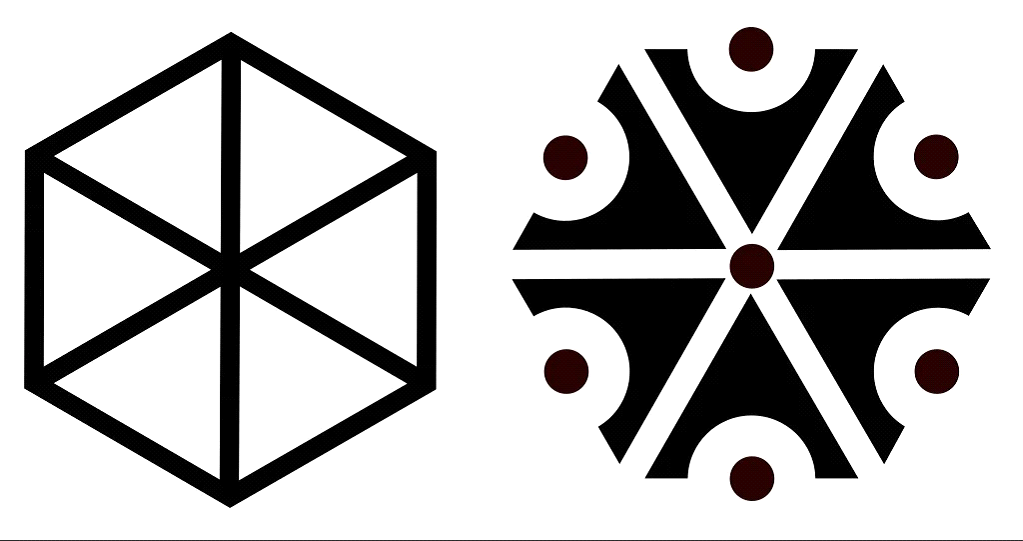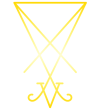Names of Zeus: Perun
Born from the heavenly forge of Svarog, Perun is the chief God of the Slavs. He was regarded as a thunderer God and a God who oversaw all oaths in battle, referenced in the chronicles of Russia as the most important God in the pantheon. In Kievan Rus and many other ancient Slavic entities, he was given pride of place.
Procopius of Caesarea, a historian of Christian Rome writing about the Ostrogoths and Slavs, references Perun the most:
De Bello Gothico, Procopius of Caesarea
… they acknowledge that one God, creator of lightning, is the only lord of all: to him do they sacrifice an ox and all sacrificial animals.
They do not know fate and do not admit that it has any power over people, and when they are about to die, either because they are seized by illness or in a dangerous situation in war, they
promise that if they are saved, they will immediately offer a sacrifice to the God for their souls; having escaped death, they sacrifice what they promised, and think that their salvation
has been purchased by this sacrifice.
They worship rivers and nymphs and all sorts of other deities; they offer sacrifices to all of them, and with the help of these sacrifices, they also perform divination.
One of the biggest problems with the analysis of the God named Perun is that many modern sources about him are neo-pagan forgeries from the past two centuries, often intermixing symbolism from other thunder Gods such as Indra or Zeus. Due to the thoroughness of Christianization, the majority of sources about Perun come from purely Christian perspectives on "demonic idols" and are pieced together from fragmented folklore.
While the Temple of Zeus does not disapprove of Neo-Pagan movements such as Rodnovery, which express a desire to move toward the God of Gods even in co-opting symbolism that likely belonged to this God, we must stick to what the classical sources and evidence suggest. Thus, any page about Perun one encounters on the internet should be approached with rigid awareness of this issue.
COSMOLOGICAL ROLE
In The Tale of Bygone Years, a chronicle of the post-Christian history of the Rus, Perun is referenced as a taker of oaths. Anyone who defied their oath not to commit war suffered grisly punishments. Similarly to the role of Jupiter, this may also indicate his connection to the concept of xenia among the Slavs.
SKY GOD OF RULERS
It was believed that Perun carried the power to fertilize the fields through lightning. Due to this terrifying power, he served as one of the patron images of the Rurik dynasty. Many years after Christianization, some sources bitterly lament that peasants would return to the worship of Perun.
According to The Tale of Bygone Years, the Rus swore by Perun in treaties with the Greeks. They stated that those who broke the oaths were to be cursed and would have to pay with death by their own weapons and slavery in the afterlife. Later, the chronicle relates that Prince Vladimir Svyatoslavich established a temple of Perun in Novgorod and Kiev, placing Perun at the head of the other Gods.
The First Novgorod Chronicle recounts how Archbishop Joachim of Korsun cast Perun’s idol into the river.
Another revealing text, much like the Welsh texts, concerns a primary translation of the Alexander Cycle from the 9th or 10th century, where Alexander is called a child of Perun (Zeus) by the translator:
Alexandria (Rus translation)
Rejoice, teacher of the Rakhmans, son of God, Porun the Great, Tsar Alexander, who is the ruler of all people, calls you.
A fragment of the work The Word of a Certain Lover of Christ and Zealot for the True Faith from the Paievsky Collection laments the endurance of belief in "demons," also noting the connection of fire-worship to these beliefs, similar to the Celts and Zoroastrians:
The Word of a Certain Lover of Christ and Zealot For the True Faith
Just as Elijah the Thesbite, having slaughtered the priests and false prophets of the idols, numbering up to three hundred <…>, so he (the lover of Christ) cannot tolerate Christians who live with a dual faith, who believe in Perun, and in Khors, and in Sim, and in Regla, and in Mokosh, and in the Vil, of whom there are thirty-nine sisters, as the ignorant say, and consider them Goddesses, and therefore they bring them sacrifices, slaughter chickens for them; and they pray to fire, calling it Svarozhic... It is not proper for Christians to play demonic games with idol sacrifices at feasts and weddings, when they pray to the fire under the barn, Mokosh, Sim, Regl, Perun, Rod, Rozhanitsy, and all those like them.
Another work, Walking of the Most Holy Theotokos Through Torment, based on a more limited Greek work, references Perun:
Walking of the Most Holy Theotokos Through Torment
And the Blessed One asked the Archangel: Who are these? And the Archangel answered: These are those who did not believe in the Father and the Son and the Holy Spirit, forgot God, and believed in what God created for us for our labors, calling them gods: the sun and the moon, the earth and the water, and the beasts and reptiles. All these people made of stones [Trajan, Khors, Veles, and Perun] turned into Gods...
A certain 15th-century codex contains a question-and-answer format regarding "How many heavens exist?" The response includes: "... there are many Peruns." This is also reflected in the Lithuanian equivalent reference to Perkūnas.
PERUN MOUNTAINS
The mountains of Perun have been located in Montenegro, Croatia, Russia, and many other areas. This suggests the presence of a mountain cult.
SYMBOLISM OF PERUN
Perun was described as silver-headed, with a golden beard.

These "thunder mark" symbols are often associated with Perun in all his facets. Resembling petaled rosettes or swastikas, they were carved on homes, weapons, and jewelry for protection against evil and to invoke Perun's power against thunder. In many regions, the symbols were added to beams to prevent lightning strikes.
Archaeologists have discovered shrines associated with Perun, featuring the symbolism of the number nine in their layout and other aspects. It is assumed that the God was linked to this number, representing completion.
The name "Perun" is closely related to the Baltic God Perkūnas and the reconstructed Proto-Indo-European deity *Perkʷunos, suggesting a shared origin among these cultures. The root *perkwu initially denoted "oak," a tree sacred to thunder Gods, but in Slavic languages, it evolved to mean "to strike" or "to kill," reflecting Perun's association with thunderbolts.
Perun was worshipped by the Varangian Norse warriors hired by Oleg and Igor during their campaigns against Byzantium. In the 971 AD treaty, the Varangians swore their oaths not only by Perun but also by the Slavic deity Veles. Perun was thus largely interchangeable with Thor.
A major element of the Perun cult was absorbed into the Hebrew prophet Elijah (Ilya) in Russia, who was considered to rule over matters of lightning.
OAK TREE
Perun has a strong association with the oak tree, a connection evident in Slavic traditions. In a forged charter supposedly from 1302, Perun’s oak is mentioned as a boundary marker for estates donated by Prince Lev Danilovich to the Bishop of Przemysl.
Throughout Slavic lands, the oak was the most revered tree, widely attributed with cultic significance. In South Slavic folklore, oak groves were places of worship, reinforcing the idea that the connection between Perun and the oak was not coincidental.
Western Slavs were also known to venerate sacred oaks. Helmold recorded that they had fenced-off oak groves dedicated to a god of justice, Prova, a name some believe to be a distorted form of Perun. The Slavic Chronicle describes how Bishop Gerald, upon arriving in Oldenburg, ordered the destruction of sacred groves and forbade the Slavs from swearing by trees, springs, and stones, instead requiring them to bring criminals before a priest.
The link between Perun and oaths is well-documented, further solidifying his association with the oak in Slavic tradition.
BIBLIOGRAPHY
De Bello Gothico, Procopius of Caesarea
Tale of Bygone Years
Walking of the Most Holy Theotokos through Torment
Paganism of the Eastern Slavs on the Eve of the Baptism of Rus: Religious and Mythological Interaction with the Iranian World. Pagan Reform of Prince Vladimir, M.A. Vasilev
Paganism and Ancient Russia, E.V. Anichkov
Credit:
Karnonnos [TG]
Edward Lonsa (Elijah clarification)

 አማርኛ
አማርኛ العربية
العربية বাংলা
বাংলা Български
Български 中国
中国 Čeština
Čeština Dansk
Dansk Deutsch
Deutsch Eesti
Eesti Ελληνικά
Ελληνικά Español
Español Français
Français हिन्दी
हिन्दी Hrvatski
Hrvatski IsiZulu
IsiZulu Italiano
Italiano 日本語
日本語 Kiswahili
Kiswahili Magyar
Magyar Македонски
Македонски नेपाली
नेपाली Nederlands
Nederlands فارسی
فارسی Polski
Polski Português
Português Română
Română Русский
Русский Slovenščina
Slovenščina Svenska
Svenska Tagalog
Tagalog Türkçe
Türkçe